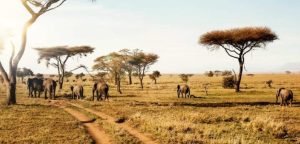Optimal Timing for Scaling Kilimanjaro
If you are considering embarking on the adventure of a lifetime by scaling Mount Kilimanjaro, the highest peak in Africa, it is crucial to carefully consider the timing of your climb. The timing of your expedition can greatly impact your overall experience and chances of successfully reaching the summit. In this article, we will discuss the best months for scaling Kilimanjaro and the factors to consider when timing your climb.
Best Months for Scaling Kilimanjaro
The best months for scaling Kilimanjaro are generally considered to be during the dry seasons, which occur from late June to October and from December to February. During these months, the weather is typically drier, with clear skies and less precipitation, making for better climbing conditions. The temperatures are also milder during these periods, making it more comfortable for climbers to navigate the challenging terrain.
The months of January and February are particularly popular for climbing Kilimanjaro, as the weather is typically stable and the days are longer, allowing for more time to reach the summit. Additionally, the mountain is less crowded during these months compared to the peak season in August, giving climbers a more peaceful and serene experience.
Factors to Consider for Timing Your Climb
When planning your Kilimanjaro climb, there are several factors to consider in order to determine the optimal timing for your expedition. One important factor to take into account is the level of precipitation and cloud cover on the mountain. Climbing during the rainy season, which occurs from March to May, can result in muddy and slippery conditions, making it more challenging to navigate the terrain. Additionally, cloud cover during the rainy season may obstruct the breathtaking views that Kilimanjaro is known for.
Another crucial factor to consider is the level of crowding on the mountain. Kilimanjaro is a popular tourist destination, and certain months, such as August, tend to be busier than others. Climbing during the peak season can result in crowded trails, limited availability at campsites, and a less peaceful experience overall. Choosing to climb during the shoulder seasons, such as June or September, can help avoid the crowds and provide a more intimate and authentic climbing experience.
Lastly, it is important to consider your own personal preferences and physical capabilities when determining the timing of your Kilimanjaro climb. Climbing Kilimanjaro is a challenging endeavor that requires physical fitness, mental toughness, and proper acclimatization to the high altitude. Choosing a time of year that aligns with your fitness level and comfort with the weather conditions can greatly impact your chances of successfully reaching the summit.
In conclusion, the optimal timing for scaling Kilimanjaro depends on a variety of factors, including the weather, crowding, and personal preferences. By carefully considering these factors and choosing the right time for your climb, you can increase your chances of a successful and memorable expedition to the roof of Africa. For booking requests and information on guided tours to Kilimanjaro, contact Sunset Africa Safari at info@sunsetafricasafari.com.


